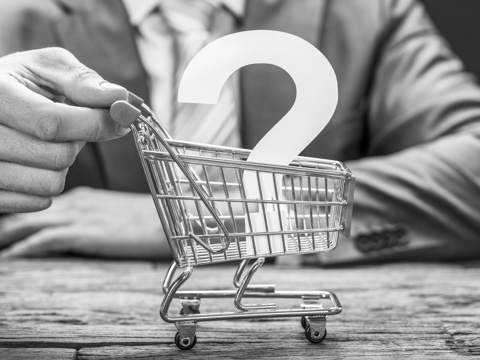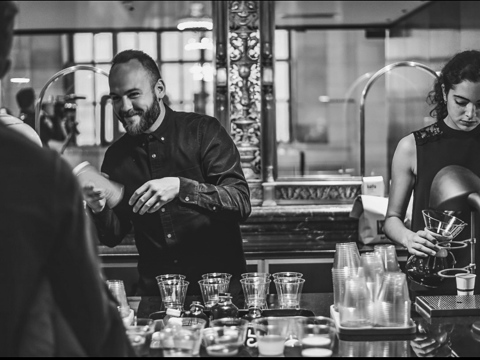The ultimate redwigwam jargon buster…

Published on: Mon, 16 Jan 2023
By: Claire, redwigwam
By: Claire, redwigwam
Got a brief but don’t know your facing from your fixture, or your PoS from your POG?
Never fear.
The ultimate redwigwam jargon buster is here!
Joking aside, we understand what a minefield the world of field marketing can be – even the pros need help sometimes.
Here’s a brief overview of some of the most used jargon which you are likely to see on job briefs for redwigwam.
If you’re still stuck after reading through this, please send us a message via chat and we’ll try our very best to help!
The jargon buster
Action alley
- The central aisle around the store where there is generally the most open space. Retailers prompt shoppers to make impulse purchases by positioning displays along this main thoroughfare.
Audit
- A way to ensure compliance and performance of a merchandising display. Tasks include ensuring products are in the right place, the display matched the planogram and correct labels/signage are used.
Backorder
- Used when a certain quantity of a product could not be fulfilled on an order, so it is put on backorder for when it is back in stock.
Bar code
- A barcode is a unique, machine-readable code made up of alternating dark and light lines that correspond to a number.
- Barcodes are used for faster checkout and can help you track inventory in and out.
Campaign
- Planned advertising schedule of a specific length (usually up to 13 weeks).
Clip strip
- A retail product display, which is a length of either plastic or metal with clips or hooks at regular intervals, for hanging merchandise.
- You'll find these in the aisle, on an endcap or at the check outs, and they are often used for impulse purchases.
CPG (Consumer-Packaged Goods)
- CPG's are items which customers use and need to replace on a frequent basis.
- Examples include food, beverages, cosmetics and cleaning products.
Cut-in
- Shifting or removing merchandise to make space on the retail shelf for new or promotional products.
- Cut-ins typically occur between major merchandising resets to introduce items more quickly.
- You may also hear NPI (New Product Introduction) and EOL (Product End of Life).
DC (Distribution Centre)
- A warehouse or specialised building which stores product stock that will be sent out to retailers (or directly to consumers).
Dead stock
- Dead stock is merchandise or inventory which has never been sold or has been sitting in stock for a lengthy period of time.
- Sometimes this is because an item is seasonal, or it can mean the item is just not in demand.

Display
- A presentation of a store’s products used to attract and entice customers.
Dump bins
- Oversized bins which are usually stocked with individually packaged products.
- These are ideal for impulse and seasonal products.
- They are usually located in heavily trafficked areas around the store.
EAN (European Article Number)
- A system of barcode symbols and numbering standards which are used in global trade to identify a specific product type, packaging configuration, and the manufacturer who produced it.
EFTPOS Machine
- EFTPOS (Electronic Funds Transfer at Point Of Sale) is the machine used to process card payments.
- Other names include card terminal or card reader.
Endcap
- A display at the end of an aisle.
- Endcaps offer a competitive advantage for brands to call special attention to new or seasonal products, or to capitalise on impulse purchases from customers who would otherwise walk by.
EOL (End of Life)
- A term used to communicate that the product is in the end of its relevancy period (from the vendor's point of view), and they will no longer market, sell, or sustain it.
EPoS
- Electronic Point of Sale, a computer based system used in retail stores to process payments, record sales, keep an inventory of stock, collect customer information and more.
ESL (Electronic Shelf Label)
- A system which allows retailers to display product prices on shelves.
- The pricing is automatically updated whenever changes are made in the central server.
Facing
- The number of identical products (or same SKU) facing out toward the customer.
- Facings are used in plan-o-grams and when zoning a retail store - for example, a product may have 2 facings on the 2nd shelf up from the floor.
- It’s also the process of pulling products forward to be flush with the front of the shelf.
- Also known as blocking, zoning, straightening or fronting.
Fixture
- Any piece of furniture or equipment that is fixed in position and displays or presents products.
- Fixtures are strategically arranged within the store to streamline the shopping experience and entice customers to buy.

Flash sales
- Refers to sale events that take place for a limited time.
- Flash sales can last anywhere from several hours to a couple of days and entice consumers with huge bargains.
- The catch is, shoppers have to complete the purchase ASAP, or they risk losing the items to other shoppers.
Freestanding display unit (FSDU)
- A display that stands alone in an aisle.
- Used to display specific products and to influence buying patterns.
Frontage
- The section of the shop directly facing the street
Gondola
- A freestanding fixture that is made up of a flat base and a vertical component with notches or peg boards.
- Stores customise gondolas with shelves, hooks, or other display accessories.
Header cards
- These signs usually appear on the shelf tag, next to a product’s price.
- Header cards can help differentiate brands from similar items nearby on the shelf.
- They are similar to shelf talkers.
- Brands use these cards to educate the buyer, point out promotions, and suggest ways to use the product.
Islander/Quad
- An independent display positioned on the floor in a store’s main aisle.
- It generally has merchandise on all sides, and features a distinct category of products.
Merchandising
- This is the act of displaying products in a shop in a visually appealing way to encourage customers to purchase it.
- It can include props, pricing signs, packaging and more.
MOD (Modular)
- MOD is another word for planogram (POG) and is used to refer to one 4-foot section of an aisle where a category of goods, like cereal, is on display (For example, the cereal is on MOD 4 in aisle 12).
MSRP (Manufacturer’s Suggested Retail Price)
- The price that the manufacturer of the product believes the item should sell for in stores.
Mystery Shopping
- This is an activity practiced by market research companies, watchdog groups, retailers and brands to check product or service quality or compliance.
- The mystery shopper acts like a regular consumer and performs undercover tasks including asking questions, submitting complaints, or simply completing a purchase like they normally would.
- They provide feedback or write reports detailing their experience with the retailer.
- Mystery shoppers must not bring attention to the activity they are completing in store.

Off-shelf
- Any display or promotion which is not part of the regular store, e.g. FSDU or clip strips.
OOS (Out of stock)
- Used when a product sells out and is not available for the customer to purchase.
Order lead time
- This is the number of days it takes for a product to reach the store after an order has been sent.
- You may need to think about this when ordering popular products which often sell out.
- Used when a product sells out and is not available for the customer to purchase.
OSA (On-Shelf Availability)
- The availability of products for sale in store; without the need to transport stock from a warehouse or another store.
Pack out
- The total number of packages of an item for the shelf to be at capacity or fully stocked.
- Packing out refers to the process of filling the store shelves with replenishment products from the store’s warehouse/backroom supply.
Pallet
- A wooden/plastic structure which is used to support goods while they are being moved.
POG (Planogram)
- A planogram is a visual diagram/drawing which provides detailed information where every product in a retail store should be situated.
- A planogram will also illustrate how many facings are allocated for each SKU (Stock Keeping Unit).
- You will use a planogram to see exactly where to place specific products on shelves within an aisle in order to maximise sales.
Point-of-purchase (POP) display
- Promotional collateral or signage that is not part of the regular store but is placed next to the product it’s promoting.
- POP may call customer attention to a discounted price, new packaging, coupons or special offers.
- These items are generally located at the checkout area or other location where the purchase decision is made.
Pop up shop
- A pop up shop is a temporary retail space.
- Retailers open pop up shops for many reasons which include; moving into a new market, boosting brand awareness, to test a new start up and more.
POS (Point-of-sale) system
- At its most basic level, a POS system is a cash register/till system used to ring up sales and keep a record of transactions.
- Nowadays, POS (sometimes called ePOS) solutions serve as retail management systems which handle everything from sales and inventory, to customer management and e-commerce.

Private label
- Brands which are not owned not by a manufacturer, but by a retailer or supplier.
- Retailers and suppliers purchase the goods, then label and market them under their name.
Quantity on hand
- The physical inventory a retailer has in possession at the store.
- Also known as on hand or OH for short.
Sales-based ordering system (SBO)
- Automatic ordering system which orders stock based on sales and stock in the store.
Section manager
- Manager who Team Leaders and staff report to.
Shelf capacity
- The volume of stock on the shelf
- Calculated by multiplying the number of products wide, high and deep.
Shelf-edge label (SEL)
- The label on the shelf edge which shows the product number, the number of products across the shelf, the price, the description and the European Article Number.
Shelf-identifying shelf-edge label (SISEL)
- The label on the shelf edge which shows the number of the shelving unit and the letter of the shelf.
- Usually given in the format 05L10A, meaning aisle 4 on the left, mod 10, shelf A.
- Uses include identifying a product location for dotcom, and stock control.
Short life
- Products which have less than seven days until their ‘display until’, ‘use by’ or ‘best before’ date (whichever is soonest).
SKU (Stock Keeping Unit)
- A Stock Keeping Unit (SKU) is a code to help retailers identify each individual product line.
- A SKU code often appears as a machine-readable bar code which helps the item be tracked for inventory purposes.
Store audit
- This is the formal process of examining a retail store.
- This will involve evaluating areas including the layout, key areas for product placement, category competition and foot traffic.
UPC (Universal Product Code)
- A UPC is similar to a SKU, but a UPC is placed on the product by the manufacturer and applies to that product no matter what store is selling it.
- If two stores are selling the same product, that item will have different SKUs, but the same UPC.





